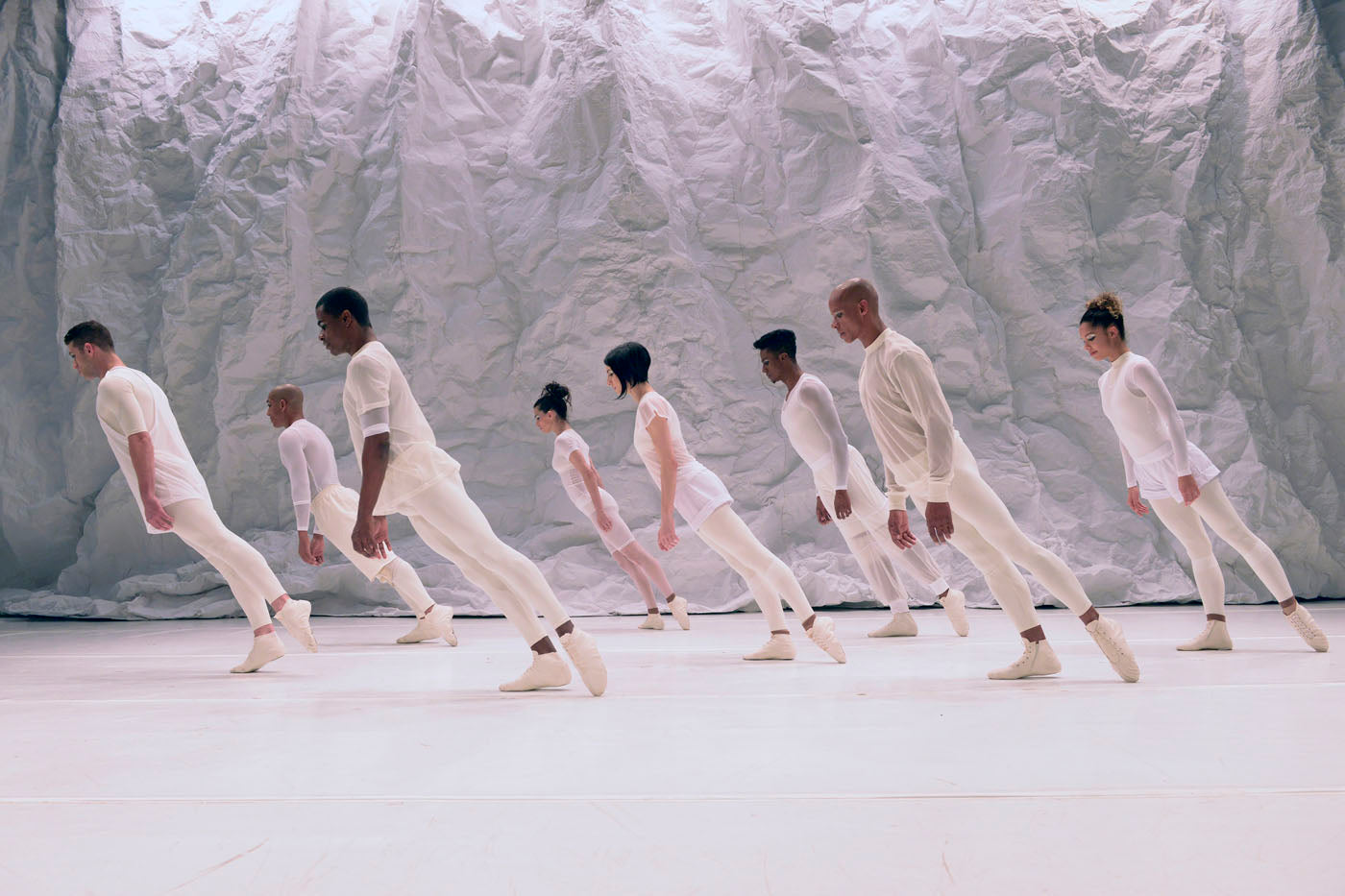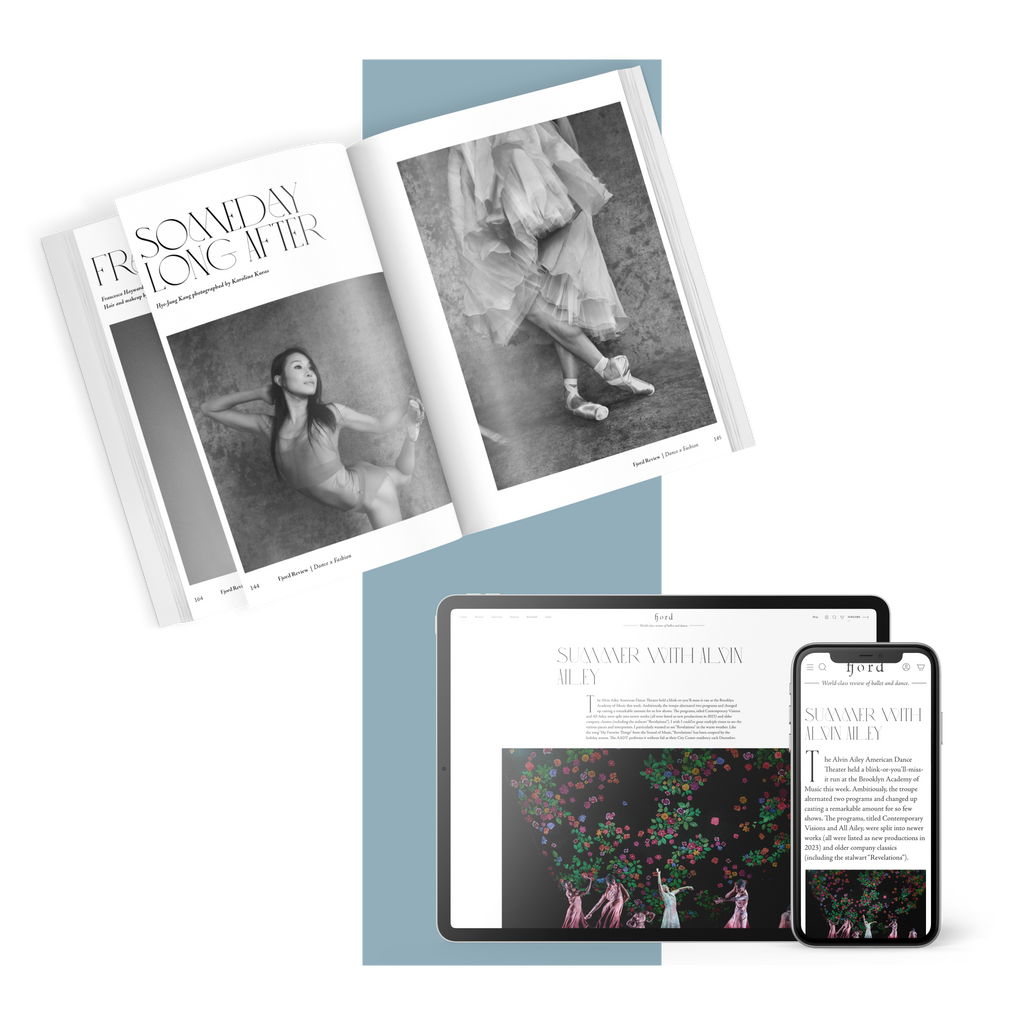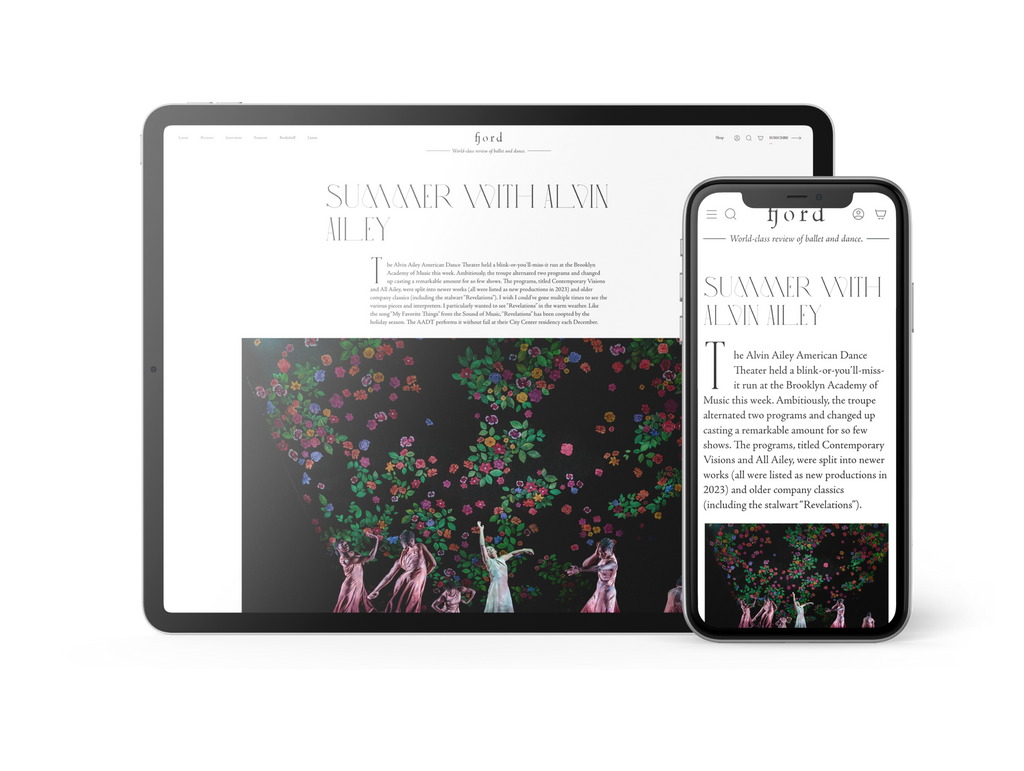Spellbound
Two performers crawl in on hands and knees wearing neon green, hooded coveralls—the lightweight papery kind made for working in a sterile environment—and clusters of balloons pinned to their backs.
Continue Reading
World-class review of ballet and dance.
Grupo Corpo, the Brazilian contemporary company, gave one performance in Austin, sandwiched by stops in Minneapolis and New Orleans, and between engagements in New York City and Europe. I can imagine that these one-nighters blur together for the members of the group, distinguishable only by hotel and theater amenities and the receptiveness of the audience. But for Austin audiences, who have had the opportunity to see the company once every few years since 2008, thanks to programming by the University of Texas, each of these rare performances is distinct. The two ballets on this program, both created for the company in celebration of the company’s fortieth anniversary last year, were memorable syntheses of music, design, movement, and powerhouse execution.
Performance
Place
Words

Grupo Corpo perform “Suite Branca.” Photograph by Jose Luiz Pedernieras


“Uncommonly intelligent, substantial coverage.”
Your weekly source for world-class dance reviews, interviews, articles, and more.
Already a paid subscriber? Login
Two performers crawl in on hands and knees wearing neon green, hooded coveralls—the lightweight papery kind made for working in a sterile environment—and clusters of balloons pinned to their backs.
Continue ReadingWill Rawls makes boundaries visible by defying them. Known for the disciplinary and topical range of his projects, the choreographer, director, and performer approaches issues of representation in “[siccer],” a multi-part, multi-site work co-presented by L’Alliance New York’s Crossing the Line Festival. A live performance at Performance Space New York accompanies a multimedia installation at the Kitchen, a book published by Wendy’s Subway, and an album published by the artist. With a creative process reaching back to 2018, the work delves explicitly into pandemic-era energies and inertias with focused intimacy and a pervasive sense of instability.
Continue ReadingIt is always interesting when multiple theme steps emerge over the course of a mixed repertory evening, but it is uncanny on one featuring five different ballets, each with a different choreographer and composer, covering a twenty-year span (2005-2025).
Continue ReadingZvidance premiered its new work “Dandelion” mid-November at New York Live Arts. Founded by Zvi Gotheiner in 1989, Zvidance has been a steady presence in the New York contemporary dance scene, a reliable source of compositional integrity, and a magnet for wonderful dancers.
Continue Reading
comments